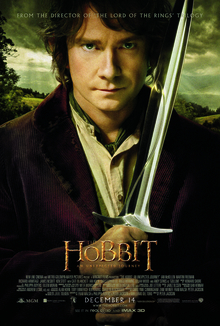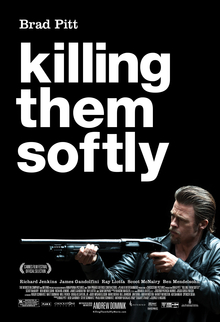Slave couple Django (Jamie Foxx) and Broomhilda (Kerry
Washington) are split up by a spiteful master and sold separately at auction.
Django is freed from his new owners by Dr. King Schultz (Christoph Waltz), a German
dentist-turned-bounty hunter who needs him to spot his latest quarry. In
exchange for partnering up, Schultz promises Django money, his freedom, and the
chance to save Broomhilda from her new owner, the suave but sadistic Calvin
Candie (Leonardo DiCaprio).
An epic Blaxploitation Spaghetti Western set in the Deep
South seems like something hypothesized during a drunken party game, but for
Quentin Tarantino, it’s par for the course. In many ways, Django Unchained is the ultimate Tarantino film. It combines the
director’s love of 70s genre movies (the title pays homage to the classic
Italian Western Django, and that film’s
star, Franco Nero, cameos here), shocking violence and brutality (to an almost
cartoonish level of excess), off-kilter banter (a group of proto-Klansmen
engage in an internal bitchfest about whether their hoods are worth wearing due
to the obstructed vision), and a distinctive soundtrack (where else would Ennio
Morricone rub elbows with Rick Ross and John Legend?). The resulting
amalgamation is clearly not for everyone, but for those who are not put off by
it, there is a lot to like here.
Despite the ugliness of its subject matter, Django Unchained is beautifully shot.
Whether it’s the serenity of a snowy winter, the grandeur of a Southern
plantation, or the blood-stained halls of a shot-up mansion, the film leaves a
distinct visual impression. That, coupled with the aforementioned soundtrack,
helps perpetuate Tarantino’s legacy as a stylistic maestro.
The characters, like the content, are similarly repellant, but
the performances, though uneven, feature a few gems. Waltz gives the best turn
here. His bounty hunter is jovial, irrepressible, and, ironically, the film’s
moral center. Foxx fills the lead role well enough, but he never hits the
emotional highs one would expect. His is a perpetually controlled fury that
manifests itself solely in the (admittedly, really cool) rapid pull of a
trigger. On the other end of the spectrum, DiCaprio shamelessly overacts as
Candie: genteel one moment, a raving psychopath the next. His partner-in-exaggeration
is none other than Samuel L. Jackson, who looks like just came from filming a
rice commercial. As Candie’s head of household, Jackson’s Stephen vacillates
between toadying yes-man (his public persona) and maliciously cunning (in
private). Then there’s poor Kerry Washington, who is given little to do here
save for mutter a few lines in German and look frightened. While some of the
cast were clearly just along for the ride, the motley assemblage of names and
faces (look for Don Johnson and Jonah Hill, among others) makes this worth
watching for curiosity alone.
Much has been said for how Django Unchained approaches the issue of slavery. Tarantino has taken his share of hits for
making such an unorthodox film on the subject, especially one that is often so
uncomfortably funny. But just as Inglourious
Basterds showed us vis-à-vis the Holocaust, there is a deeper message that lies
beyond the director’s audacity. In Django
Unchained, the dehumanizing effect of slavery looms large throughout.
Whether it’s Django’s numbness to the suffering of the myriad slaves he
encounters or Stephen’s years of internalized racism, the evil of the
institution is amplified rather than downplayed (as Tarantino’s critics have
alleged).
With a nearly three-hour run time and buckets of gore and
blood, Django Unchained will test
your limits as a viewer. But if you can hang on without getting bucked from the
proverbial horse, it’s one hell of a ride.
8.25/10





